
Located less than 10 miles from the city of Guilin, China is a landmark tourist attraction and an absolutely gorgeous historic treasure: the Reed Flute Cave, locally referred to as Ludi Cave. This stunning structure, which has been around from as far back as the 8th century, perfectly blends nature with civilization, housing nearly 100 ancient written inscriptions on its walls, which are also embedded with rock formations like stalactites and stalagmites. When the cave was rediscovered by Japanese Troops in 1940, a project was launched to preserve, protect and share this beauty, also known as "the Palace of Natural Arts", with the rest of the world.
The Reed Flute Cave has been reopened for travelers recently following the removal of quarantine restrictions. However, for those like me who think a trip to China is a little overindulgent in the current state of affairs, we've put together this fun gallery of photographs and facts to walk you through the history, and artificially-illuminated multicolored passageways of this must-see ecological marvel.

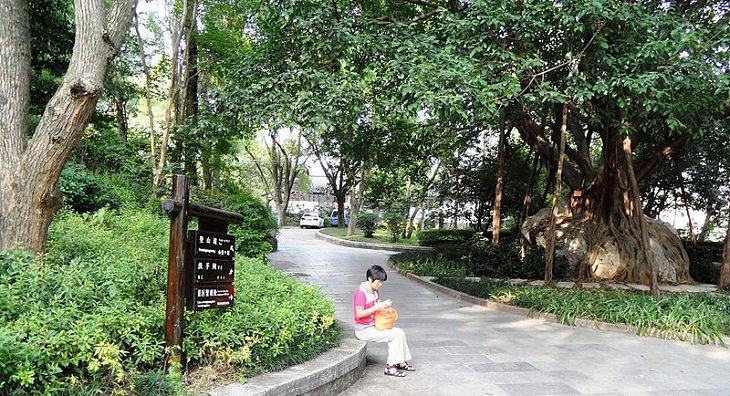
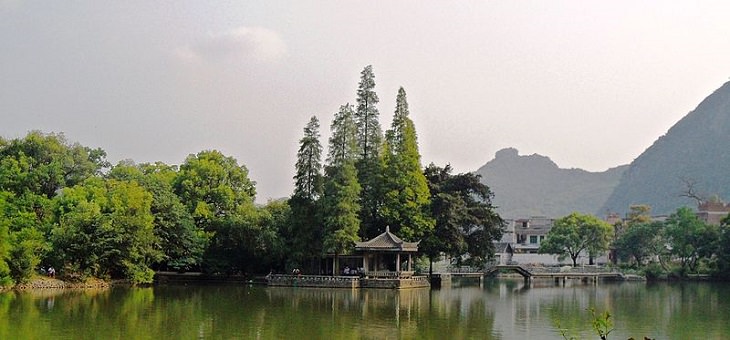
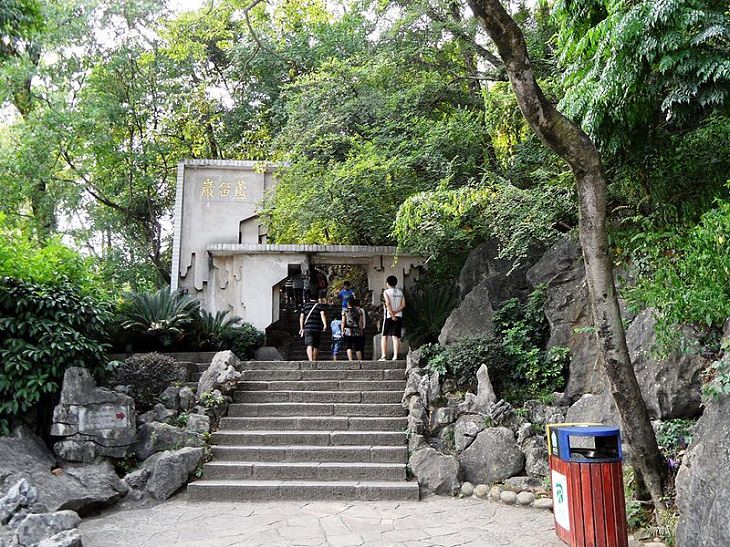
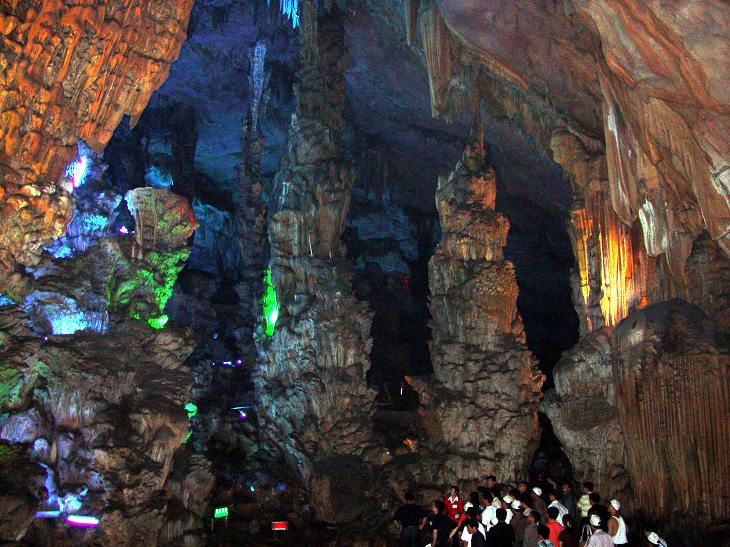
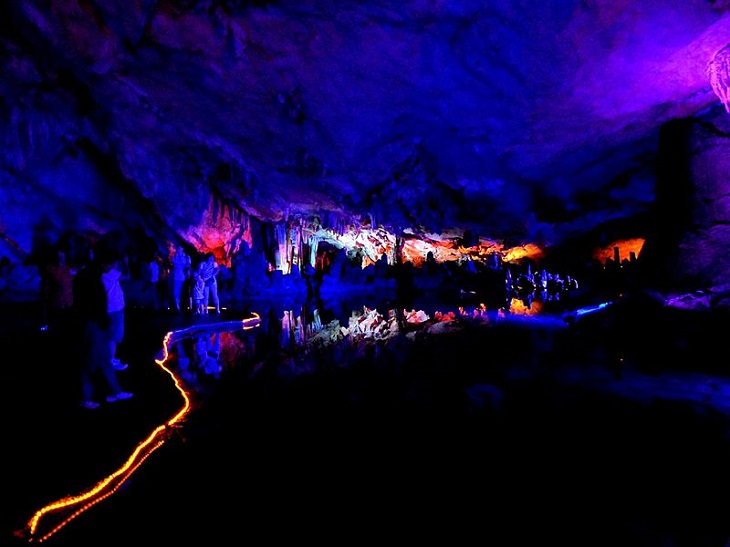
This incredibly fun and quirky tourist attraction in China is over 180 million years old and runs across nearly 800 feet in length. Though it was named for the heavy growth of reeds surrounding the cave, geologists believe that the cave was once a part of an underground lake that grew into the mountainside after the water fully retreated. The unique rock formation embedded along the walls was created by calcium carbonate build-up. Historians believe man first found the cave during the Tang Dynasty (between the 7th and 10th centuries), based on the 70 inscriptions found on the walls of the cave.
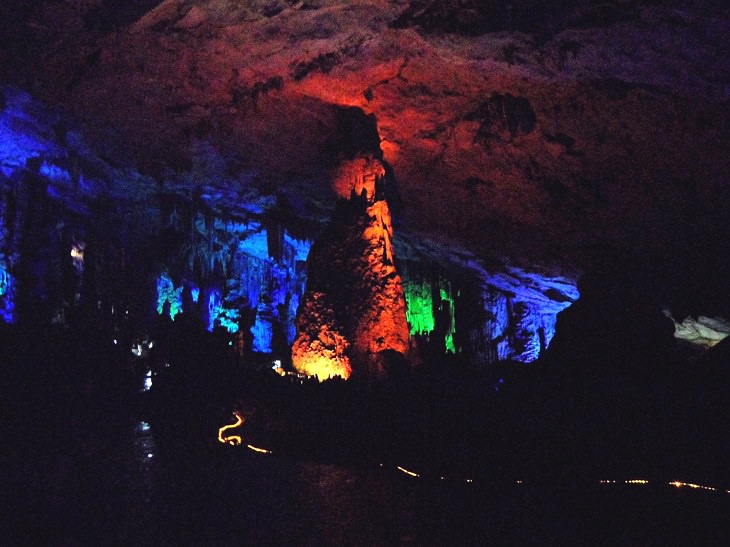
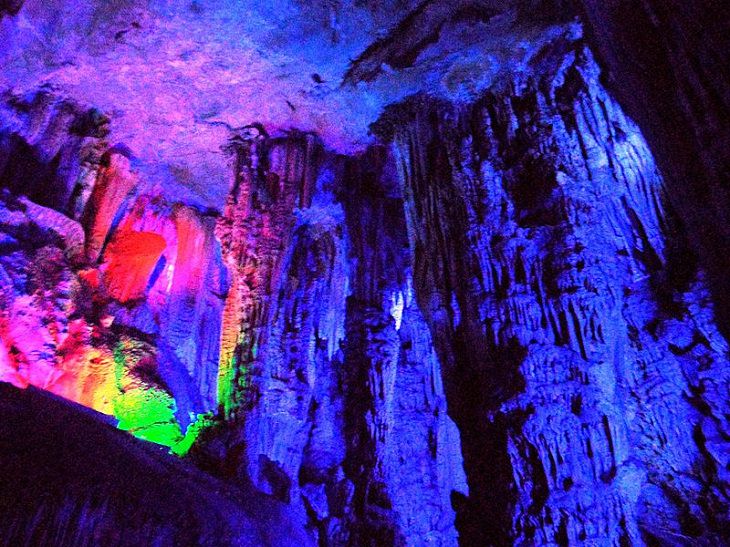
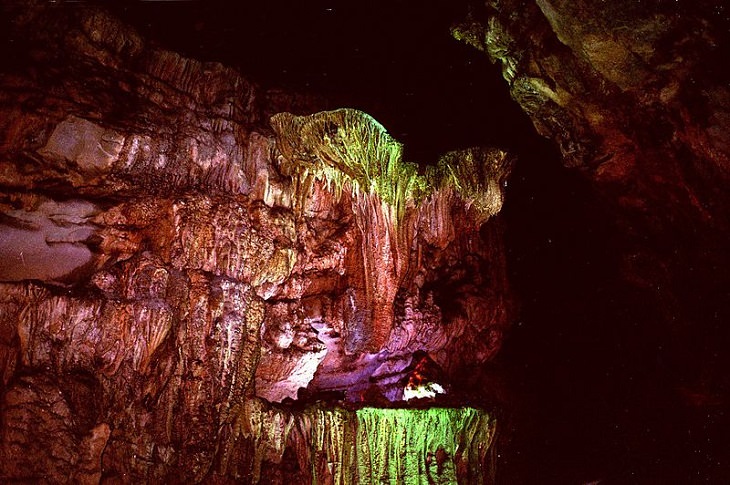
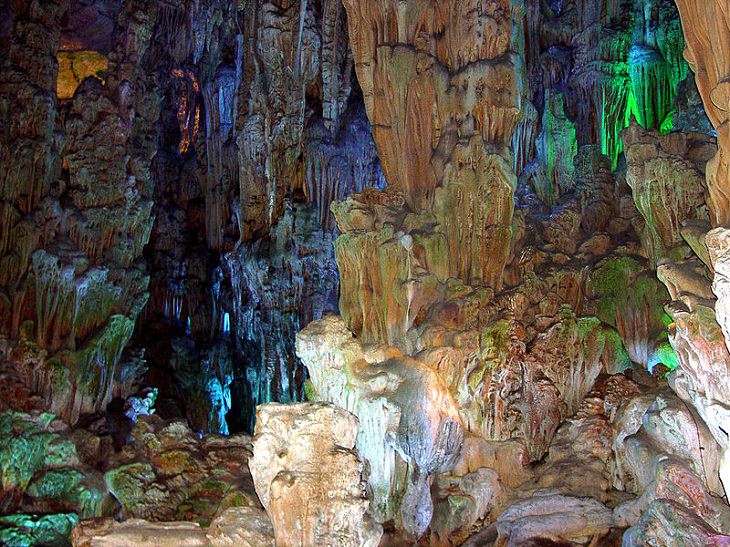
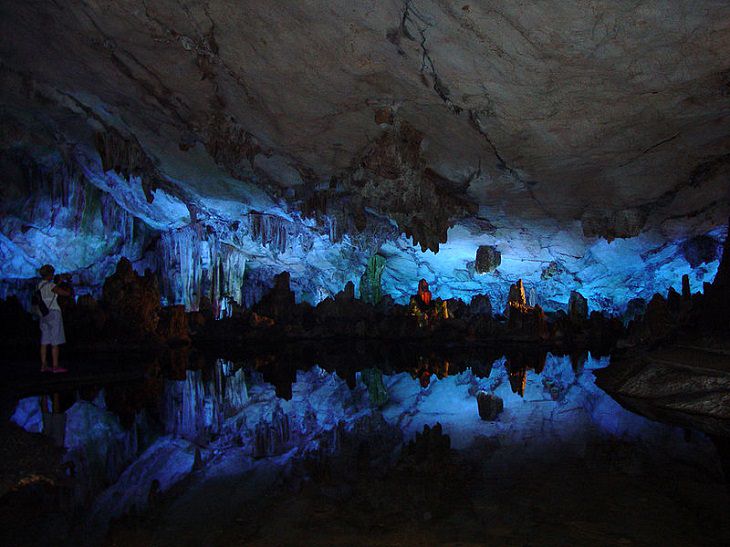
The cave was again lost shortly thereafter for many centuries until it was found by soldiers during the Sino-Japanese war. It was used by many troops during this war and World War II as a hiding spot and was also reportedly used as a shelter for certain companies and even a hospital.
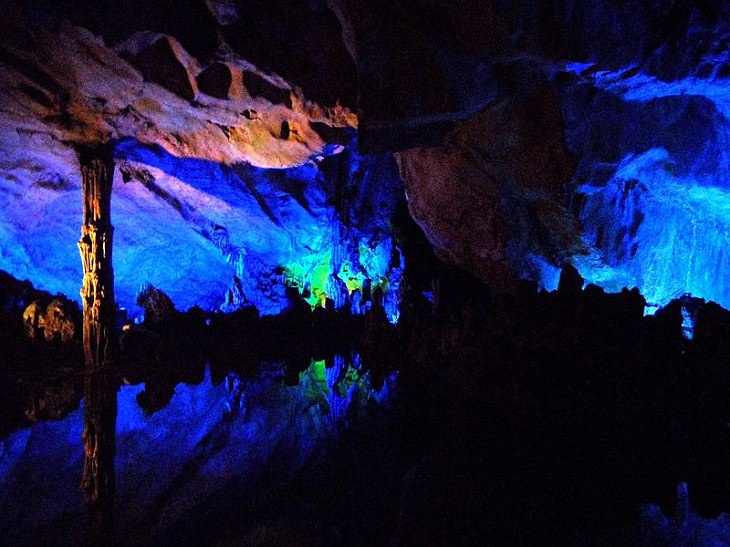
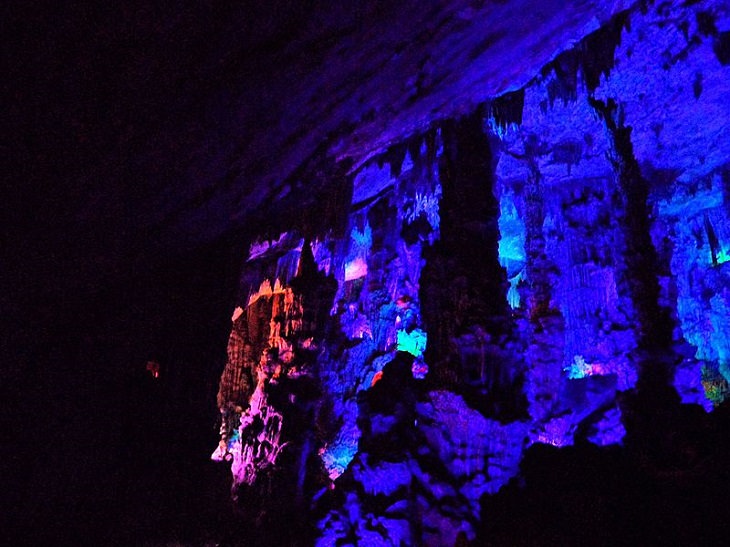
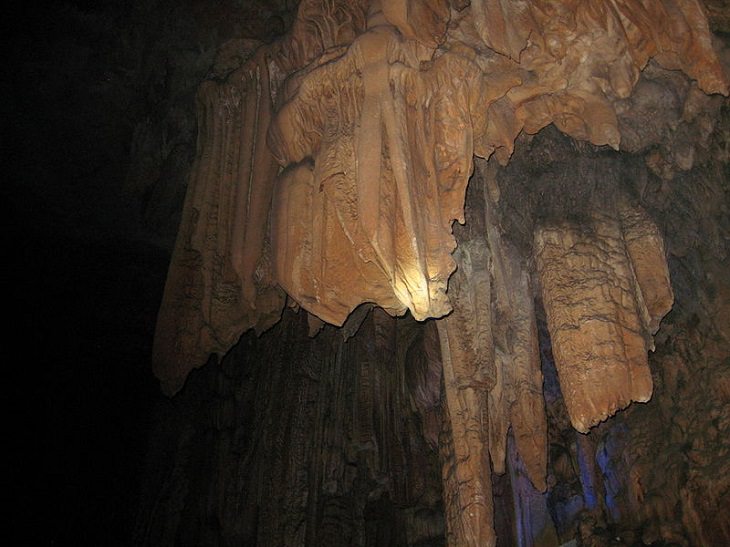
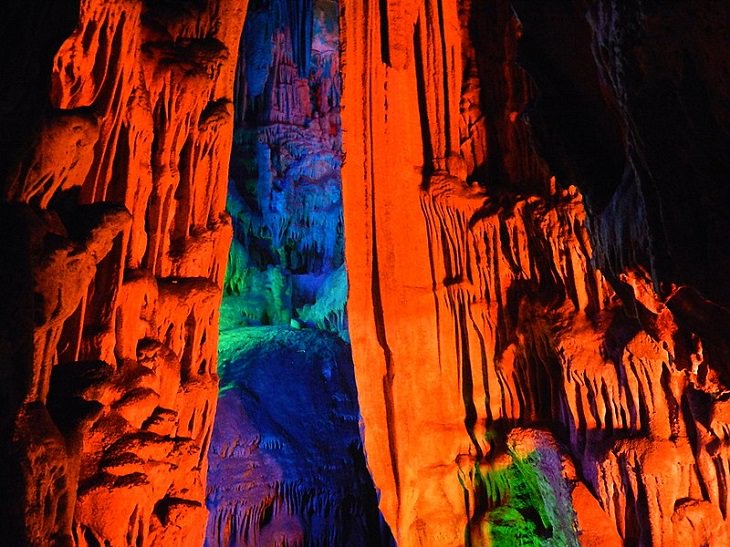
It was finally opened to tourists only in 1962, though records do show the cave having numerous visitors prior to the official opening. Now the cave receives millions of visitors annually and the tour comes as a complete package with information about the inscriptions on the walls, the formation of the stalagmites and stalactites, and even the numerous folk tales surrounding the cave, like the story of the Reed Flute Fairy Old Man and the Ocean Dragon King.
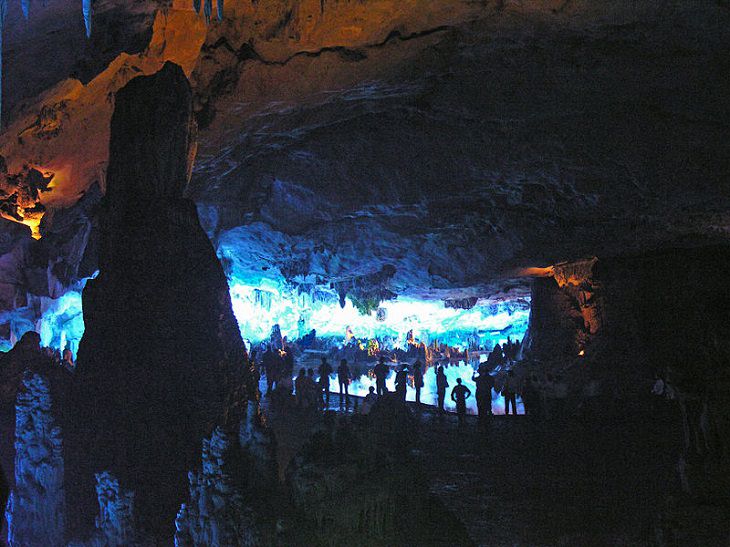
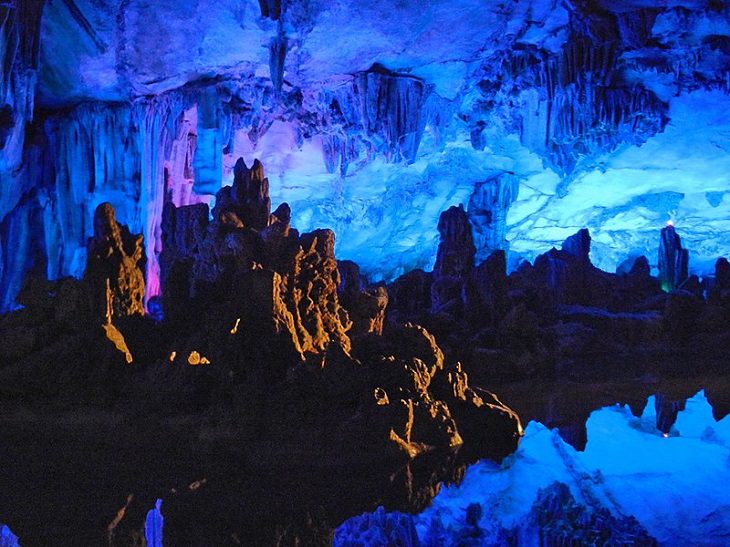

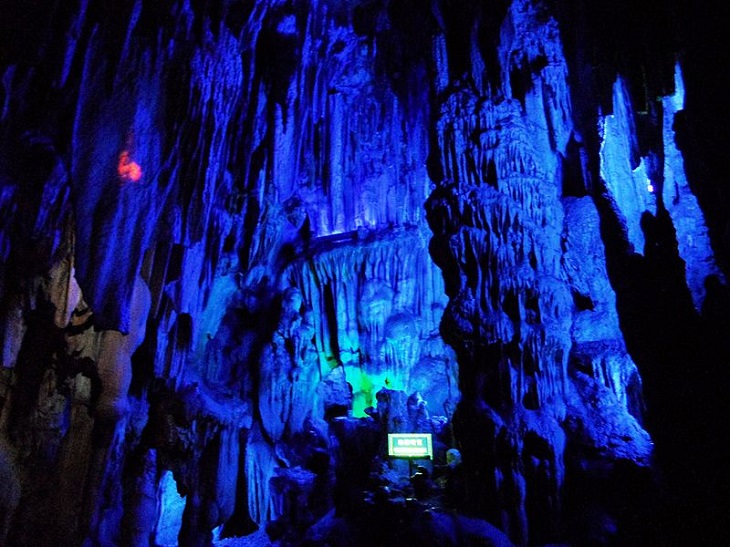
The cave isn’t the only visit-worthy attraction in this neck of the woods. Elephant Trunk Hill, a natural hill with a unique trunk-like shape, is a very popular destination for photo ops. Crown Cave has it’s very own boat and monorail system for tours as well as a waterfall inside the cave. You can even climb to the top of Diecai Mountain and visit its gorgeous butterfly museum, or take a stroll through Guilin Botanical Garden.
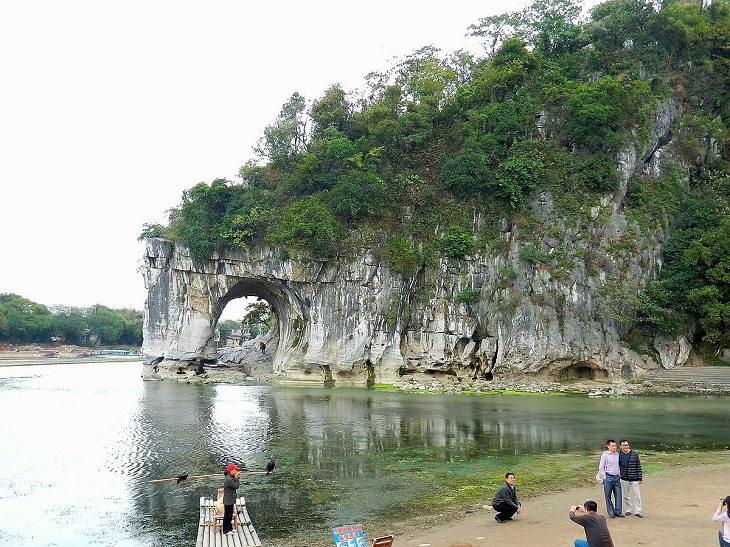
(By lienyuan lee, Wikimedia Commons)
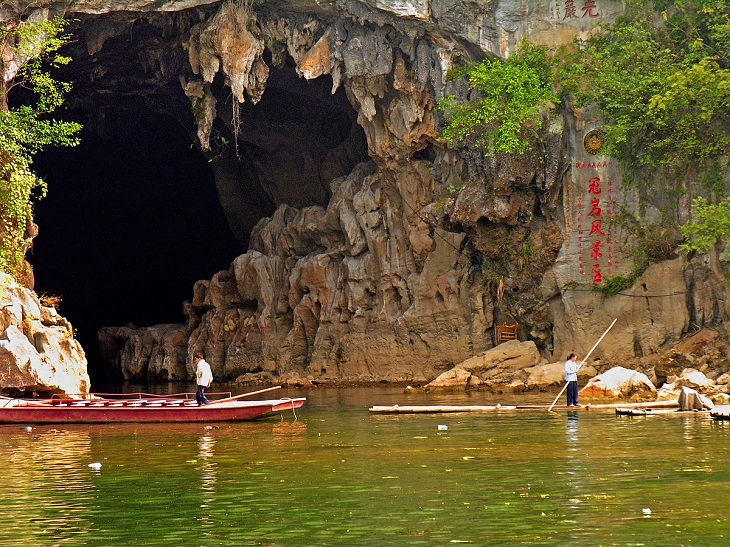
(By Dennis Jarvis, Wikimedia Commons)
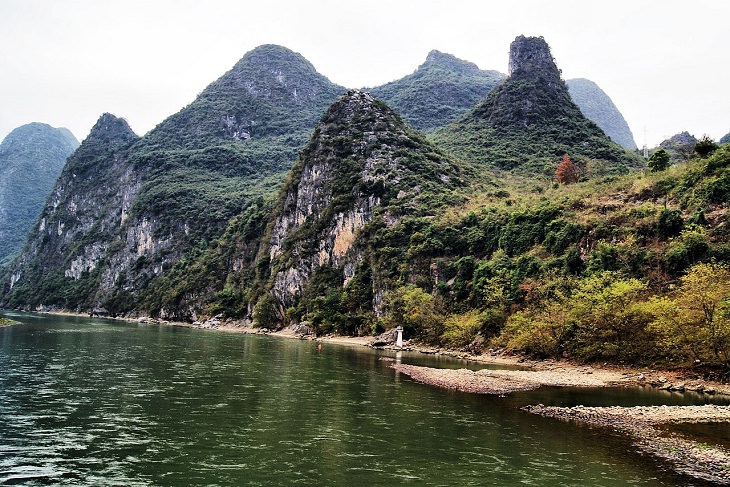
(By Haluk Comertel, Wikimedia Commons)
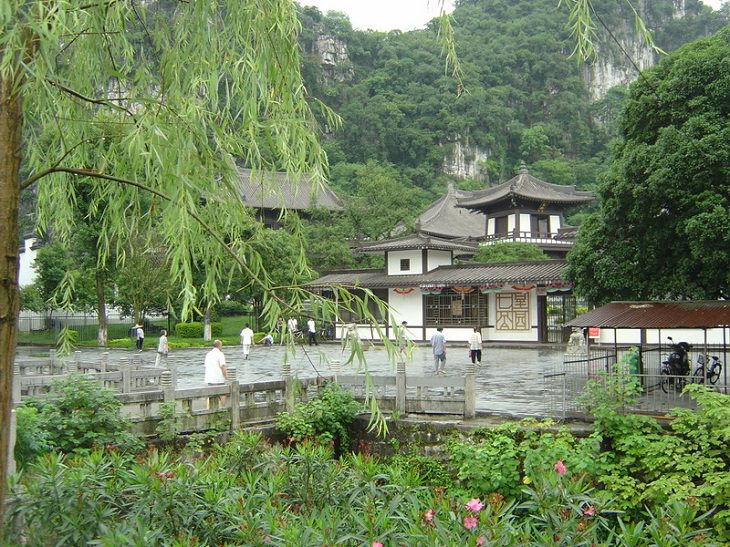
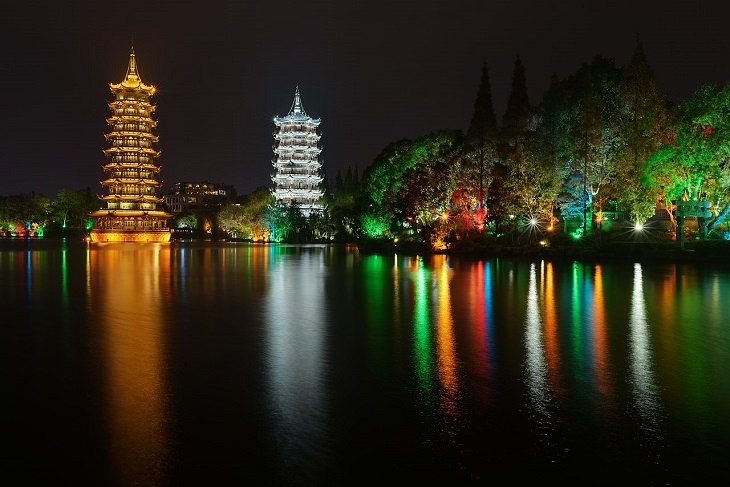
(By King of Hearts, Wikimedia Commons)
The world is filled with many gorgeous natural treasures like this palace of stone and history that are just waiting to be explored. We hope you enjoyed this walkthrough the luminescent trails of the Reed Flute Cave, it’s iridescent walls and it’s storied past!
If you enjoyed this article, share it with other world wanderers!
 14:58
14:58
This Province Is One of the Most Stunning You've Ever Seen
The Wulingyuan Scenic Area in China's Hunan Province is one of the most stunning spots in the world and is what inspired the making of the film Avatar.
 16:28
16:28
Exploring a Cave that Has Its Own Forest, River and Clouds
Son Doong, the planet's most colossal cave, boasts a vast, self-contained ecosystem with its own distinct climate. ...
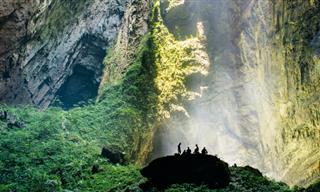
Are You Brave Enough to Visit the World's Largest Cave?
For the humble price of $ 3,000 and a year's waiting list, you too could visit this place. Is it worth it?
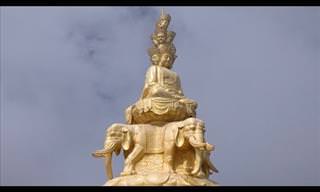 5:50
5:50
Come Visit One of the Most Sacred Places in China...
On the top of Mount Emei in the Chinese province of Sichuan, you will find one of the most beautiful and sacred sites in China...
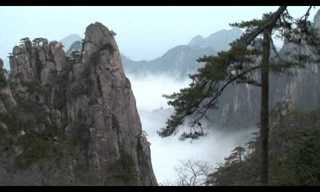 7:16
7:16
Seeing China Like Never Before - Amazing!
Huangshan (literally "Yellow Mountain"), is a mountain range in southern Anhui province in eastern China. The range is composed of material that was uplifted from an ancient sea during the Mesozoic era, 100 million years ago. This magnificent video w
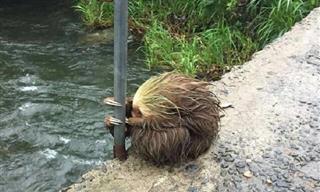
The Power of Natural Disasters Captured in Poignant Photos
These photographs give you an in-depth and chilling look at the true power and toll of the worst natural disasters from storms to floods.
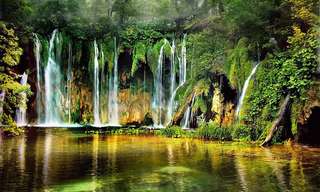
Plitvice Lakes National Park: Croatia's Secret Eden
One of the most incredible nature reserves in the world, Croatia's Plitvice Lakes National Park is a wondrous place.
 12:10
12:10
Want to Get Paid to Move to Italy or Spain? It's Possible!
Want to get paid to move to Italy, Spain, or Ireland? Yes, it’s possible!

Want to Get Cheap Flight Tickets? The Answer is Here…
Find the cheapest flight tickets with these trusted tips and tricks.

18 Magical Places in Green Ireland You Have to Visit
The unique beauty of Ireland shines nowhere brighter than in these stunning locations.

These Photos Prove New Zealand Is the Most Beautiful Place
New Zealand has to be one of the most beautiful countries in the world, and these photos are clear evidence of that. Here are 25 amazing photos.

When in Barcelona, You Must Visit These Hotspots
Barcelona is Spain's second city, and attracts millions of visitors each year. Here are 15 places you must visit when in this beautiful city.

Explore the World from Above with These 16 Photos
These aerial shots by award-winning photographer Cédric Houmadi offer a stunning new perspective of our world.

20 Unusual and Intriguing Maps to Trigger Your Curiosity
You won’t view the world the same way after seeing these unusual maps.
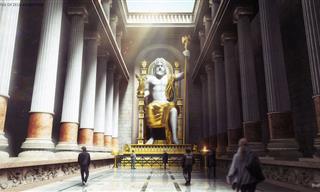
The Seven Ancient World Wonders Beautifully Reconstructed
We live in an age where technology allows us to do the impossible- check out these incredible digital reconstructions of the 7 Wonders of the Ancient World

8 Ancient Wonders You’ve Probably Never Heard Of!
Have you heard of these little-known ancient wonders?

15 Poignant Pics That Prove How Time Affects Everything
Take a look at these before and after pictures that show how much time affects everything in the world.
 25:56
25:56
A First Class Train Ride Through the Australian Outback
Let's hop aboard the Ghan and explore Australia like never before!
 9:14
9:14
These Careers Sound Fake but Are 100% Real!
Let’s take a look at some of the most unusual professions that exist today.

These Thai Temples Are Incredible Pieces of Art
Thailand has a lot to see and do, some of the main attractions are the many temples in the country. Here are 10 special and magnificent temples worth seeing.

Captivating Facts About Paris You Never Knew
Find out some cool and interesting facts about the magical city of Paris in this article.

10 Magnificent Things to Do in the City of Dubai
This guide will show you 10 must-see sites and attractions when visiting Dubai.

Why Do Passports Have Different Colors?
Most people don't suspect that the color of their passport actually has quite a lot of intention behind it. Here's what common flag colors really mean...
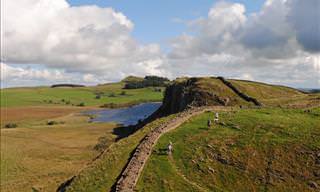
These Are 12 Of the Best Places to Walk Around the World
Of all the hiking trails in the world, these are the 12 best sites and places for those who want to travel with their feet.

15 Common Geography Facts That Are Actually Wrong!
Here are 15 common errors about the world that often leave geography teachers in tears...

19 Unique & Traditional Ways of Life Around the World
19 unique cultures that managed to preserve their traditions in the 21st century. English photographer Jimmy Nelson travels the globe to meet these unique tribes and brings back incredible photos.
 11:08
11:08
Come Travel in One of the Most Gorgeous Places in Thailand
One of the most recommended places in Thailand is Ko Phi Phi...

These Legendary Sites Are Teeming with Mythical Stories
These real-world places have a rich connection to mythology.
 8:32
8:32
The Magic of New Zealand Cannot Be Denied
The incredible scenery of this place has made it one of the most beautiful sights in the world.

Cost of Living: How Much Are People Paying for Groceries?
This is what people are paying for food prices around the world.

9 Common Travel Myths That We Decided to Debunk!
With travel season around the corner, here are a few common myths that you may need to be debunked...
 5:06
5:06
When Trains Sell Chickens: The Bizarre Story of Chiggen
This "Chiggen” was one of the most unusual trains in history. It was built for one job—sell chicken!
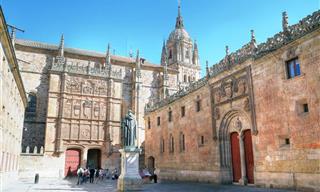
The Incredible Sights and Sites of Salamanca, Spain!
Looking at the most interesting and beautiful parts of Salamanca, Spain
 13:26
13:26
These Ancient Roman Buildings Amaze Architects to This Day
Here are 10 of the greatest Ancient Roman building projects that still stand tall and amaze us to this day!
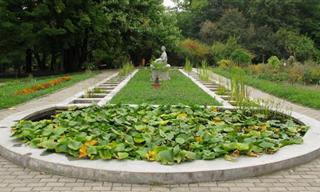
Fall in Love With This Gorgeous Romanian City
Come see the sights of Cluj-Napoca, the second biggest city in Romania and a place of gorgeous sites.

The Glistening Nightscapes of Tokyo - 12 Stunning Pics
Photographer Takaaki Ito presents Tokyo as you have never seen before.
 4:44
4:44
Reykjavik: A Journey Through Iceland’s Heart
Let us take you on an unforgettable journey through Reykjavik, Iceland's capital.

Perhaps the Most Scenic Train Rides in the World...
Although there are much quicker ways of traveling, using a train is arguably much more picturesque than the others. Here are the 7 most scenic train rides.

10 UNESCO Sites You Can See in England
There are plenty of places to see across England, but these 10 destinations have been named World Heritage Sites by UNESCO, and you should definitely see them.

Are These the Most Beautiful Streets in the World?
There's something so charming and beautiful about these streets that are surrounded by trees. Take a look at these stunning streets.

These Quotes Will Give You a New Perspective on Life
Some wonderful words about travel that can teach us all about life's great journey.
 9:48
9:48
Forgotten Train Features We Wish Still Existed Today
These old train features make our journeys so special back in the day!
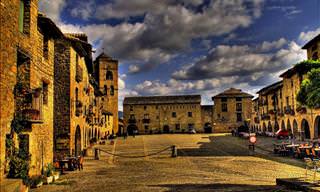
Open Your Eyes to Spain's 15 Most Cherished Hidden Towns
Spain's gorgeous little towns and villages are rendered all the more spectacular thanks to the amazing surrounding countryside...

Discover Southern Brazil's Delights On Your Next Vacation
We often think of Rio de Janeiro as the go-to place for a vacation in Brazil, however southern Brazil also has much to offer. Check out these 10 places.

10 Stunning Wonders You Need to See Before They Disappear
The Earth is full of amazing places and wonderful species, but soon enough, we may not get the chance to see them ever again.

16 Remarkable Images That Define Norway's True Beauty
Norway truly is special in so many ways...

These Photos Prove New Zealand Is the Most Beautiful Place
New Zealand has to be one of the most beautiful countries in the world, and these photos are clear evidence of that. Here are 25 amazing photos.

When in Barcelona, You Must Visit These Hotspots
Barcelona is Spain's second city, and attracts millions of visitors each year. Here are 15 places you must visit when in this beautiful city.

Explore the World from Above with These 16 Photos
These aerial shots by award-winning photographer Cédric Houmadi offer a stunning new perspective of our world.

20 Unusual and Intriguing Maps to Trigger Your Curiosity
You won’t view the world the same way after seeing these unusual maps.

The Seven Ancient World Wonders Beautifully Reconstructed
We live in an age where technology allows us to do the impossible- check out these incredible digital reconstructions of the 7 Wonders of the Ancient World

8 Ancient Wonders You’ve Probably Never Heard Of!
Have you heard of these little-known ancient wonders?

15 Poignant Pics That Prove How Time Affects Everything
Take a look at these before and after pictures that show how much time affects everything in the world.
 25:56
25:56
A First Class Train Ride Through the Australian Outback
Let's hop aboard the Ghan and explore Australia like never before!
 9:14
9:14
These Careers Sound Fake but Are 100% Real!
Let’s take a look at some of the most unusual professions that exist today.

These Thai Temples Are Incredible Pieces of Art
Thailand has a lot to see and do, some of the main attractions are the many temples in the country. Here are 10 special and magnificent temples worth seeing.

Captivating Facts About Paris You Never Knew
Find out some cool and interesting facts about the magical city of Paris in this article.

10 Magnificent Things to Do in the City of Dubai
This guide will show you 10 must-see sites and attractions when visiting Dubai.

Why Do Passports Have Different Colors?
Most people don't suspect that the color of their passport actually has quite a lot of intention behind it. Here's what common flag colors really mean...

These Are 12 Of the Best Places to Walk Around the World
Of all the hiking trails in the world, these are the 12 best sites and places for those who want to travel with their feet.

15 Common Geography Facts That Are Actually Wrong!
Here are 15 common errors about the world that often leave geography teachers in tears...

19 Unique & Traditional Ways of Life Around the World
19 unique cultures that managed to preserve their traditions in the 21st century. English photographer Jimmy Nelson travels the globe to meet these unique tribes and brings back incredible photos.
 11:08
11:08
Come Travel in One of the Most Gorgeous Places in Thailand
One of the most recommended places in Thailand is Ko Phi Phi...

These Legendary Sites Are Teeming with Mythical Stories
These real-world places have a rich connection to mythology.

I Would Be So Happy in One of These Beautiful Little Towns
When you get out of the big cities and start visiting the small ones, you realize you've missed some of the most beautiful places..
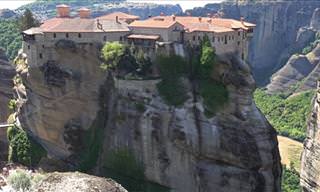 10:53
10:53
Explore the Beauty of Meteora In Stunning 4k Quality!
Meteora in Greece is an extremely beautiful place, especially when it is portrayed in stunning 4k quality.
 4:20
4:20
Admire the Mystical Streams and Moors of Czechia in 4K
Fly above Šumava National Park, a part of the ancient Bohemian Forest in the Czech Republic full of beauty, mystery, and charm!
To enable your Ad-Free Subscription, please fill the fields below
Your subscription was successful, now you can enjoy an ad-free experience!!
Note: To make sure you get no ads, please make sure to log in to your account. If you are logged in already, then refresh the page. The subscription can be cancelled at any time.


